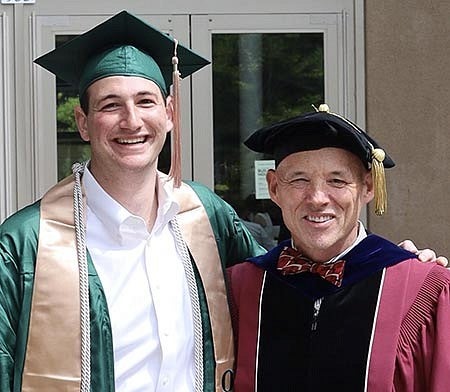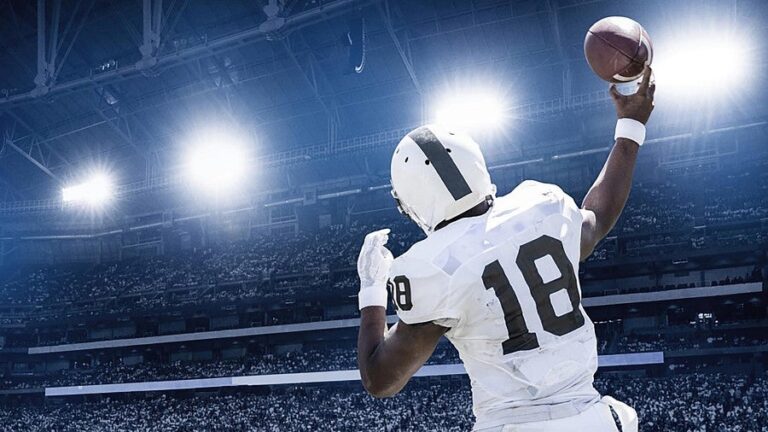A new study by students and professors at the University of Oregon has found that the NCAA football transfer portal helps some teams but not others, depending on the transfer student's position.
Adam Kovar, a 2023 graduate of Lundquist College of Business, and Charlie Beim-Aldred, a data analytics lecturer, started the project last year and submitted their analysis and research to the Journal of Sports Analytics for review. Submitted to. But their findings are already raising some eyebrows.
The paper, entitled “College Football Transfers and Recruit Performance Differences,” examines how college football transfers work.Strategic use of the NCAA Transfer Portal can improve the performance of key football positions, including quarterbacks.
To get there, Kovar and Bame-Aldred systematically evaluated each position's accomplishments using offensive and defensive grades created by Pro Football Focus, a ranking and statistics aggregation company. . For each position, we determined the average performance of recruits and transfers from the Power 5 conferences (ACC, Big Ten, Big 12, SEC, Pac-12).
“We then ran a statistically significant test to determine whether there was a true difference in outcomes between recruits and transfers at each position at the Power 5 level. Because it is the highest level of competition,” Kovar said.

The analysis ultimately found that the benefits the transfer portal brings to a team depend on position.
“We found that transferred quarterbacks and interior offensive linemen significantly outperformed recruits, and transferred linebackers significantly underperformed recruits,” Kovar said.
Kovar came up with the idea to study the effect of the transfer portal on football team performance while taking a class at Lundquist College of Business last spring.
“I started looking into it, and then I was in Charlie Beim-Aldred's data analysis class last spring and I said, 'Here's my idea.' Where do we go from here?” I really don’t know if I should go,” Kovar said. “I needed guidance on data collection and the research process, so he agreed to look at it with me.”
This partnership began during the course and continued after Kovar graduated in June 2023.
“By October, we started understanding the methodology, had a streamlined route to get there, and updated it to keep moving forward,” Kovar said. “Once he got the latest data and he got into December, he thought, 'This could be something interesting.' And from there we decided to turn it into a paper.”
In addition to the position breakdown, Kovar and Bame-Aldred also looked at the impact of the transfer portal on overall roster construction.
“When we compare the average transfer quarterback to the average recruiting quarterback, we find that teams generate about one additional win per season,” Kovar said.
Researchers also found a relationship between increased portal usage and team wins. That means teams with the lowest percentage of snaps due to transfers won him 1.4 more games on average than teams with the highest percentage of snaps due to transfers.
“Our results suggest that coaches and recruiters should be eager to leverage this portal for strategic acquisitions, rather than as a replacement for traditional recruiting through high schools and colleges. ,” Kovar said. “For student-athletes, choosing a school carefully provides the best opportunity for success in college football.”
The NCAA Transfer Portal allows student-athletes to sign up to transfer to another member institution by formally entering the portal database. The database includes statistics, positions, and other information that allows member schools to scout players who may be a good fit for their teams. Kovar and Bame-Aldred were able to complete their analysis using data available from Pro Football Focus.
The spring football transfer portal closes on April 30th. This Saturday, April 27th, is his UO spring game.
Star players need to consider not only their team's wins and losses, but also their name and potential name recognition, and whether their next institution will be effective in marketing the player.
Kovar and Bame-Aldred's collaboration also illustrates the kinds of opportunities and collaborations that occur between students and faculty at the University of Oregon, and how those connections extend beyond graduation. In fact, the researchers applied a similar methodology to NCAA volleyball and basketball players.
So, does this NCAA version of Moneyball work as a prediction?
“Let’s say we win the March Madness pool,” Kovar said.
Annemarie Knepper Sjoblom and Jim Engelhart, Lundquist School of Management

